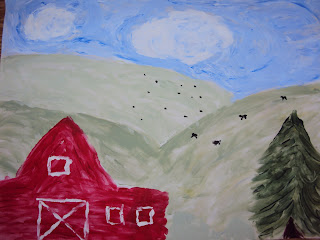
In this project, I experienced a new way of drawing, upside down, along with a unique way of using cool and warm colors. I began by practicing small parts of sketches of various objects. I then chose a large "safari" animal, an elephant, to sketch. I turned my visual example upside down. Using contour lines, I drew the elephant on my blank sheet of paper using a cool colored, light blue, drawing pencil. I think that drawing it upside down helped me focus more closely on the lines I needed to replicate. In the next step, I used the warm colors red, orange, and yellow to make patterns which would "hide" my elephant. I learned that layeriing various geometric patterns worked best to "hide" my elephant. Using the "magic ruby red glasses" I had made earlier from red cellophane paper and red construction paper, I could actually see the elephant that I had drawn hidden behind the warm colored camouflage.
I could make a project like this an extension project for almost any elementary age student. I would have the subject to be drawn related to the topic currently being studied; for example, for lower elementary we could craw a leaf to hide if we were studying trees or a fish if we were involved in a thematic unit featuring the ocean. It would also be fairly easy to adapt this project to older students who draw with more detail. Again, this project could be incorporated into almost any unit of study.

